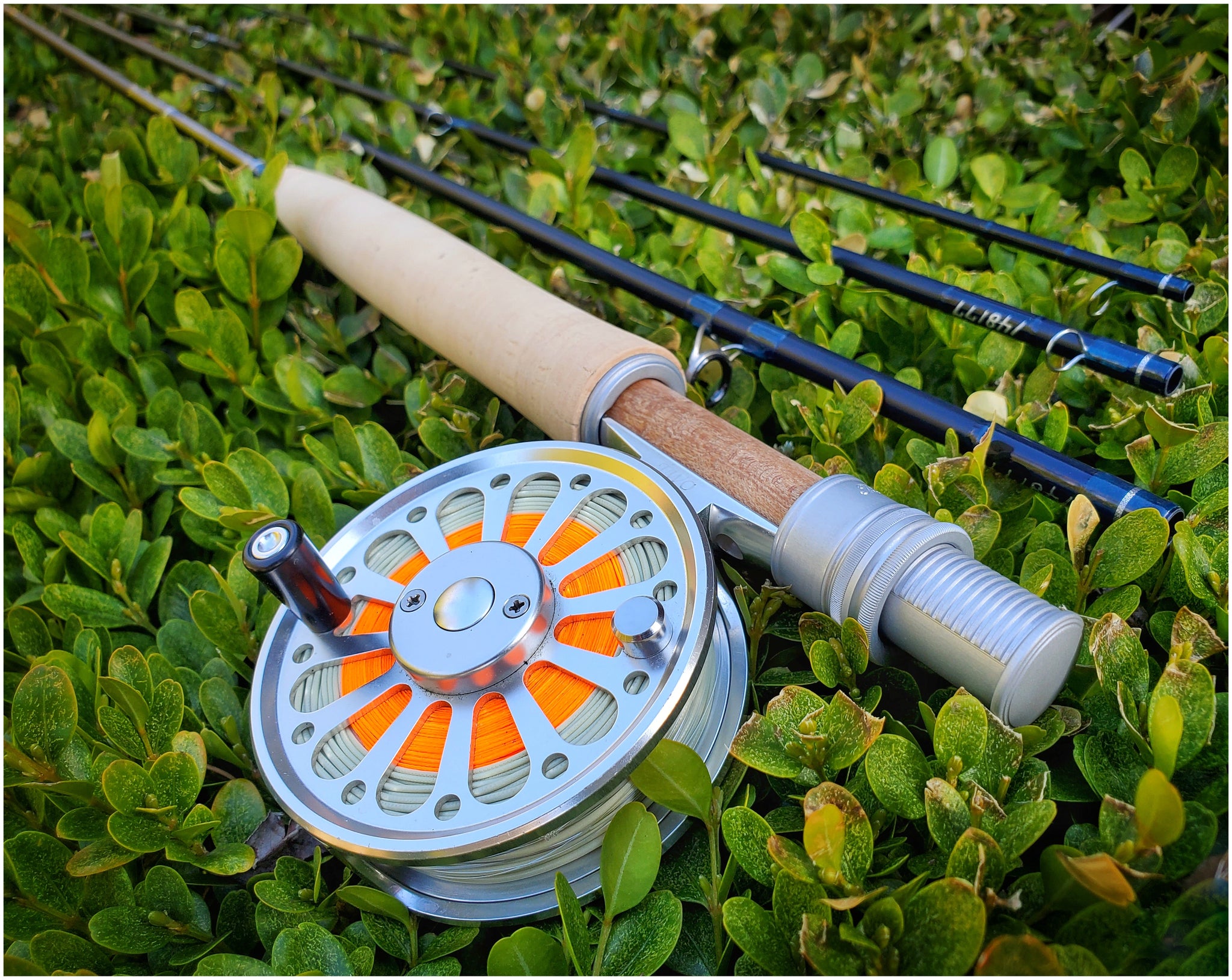
Tom Dorsey, Greenfield, MA
I’ve been asked many times for recommendations regarding the choice of a fly rod. I have also observed and listened to discussions on this topic—enough to come to the realization that many anglers make their decision based on factors that don’t share common criteria. And while there is no set rule to selecting a rod, the following are some practical guidelines and considerations worth taking into account. I hope they’re helpful.
Rod Length:
Where will you fish and what are the river conditions and structure? A long rod has advantages when the bank behind you is high or there is brushy growth, which inhibits the back-cast and tends to regularly separate the angler from his flies and tippet. This can also be a problem with saltwater beach casting due to the ever-present dune grass. The problem is no better illustrated than on the Henrys Fork of the Snake River. First, in some places, there is a two foot step down into the river compounded by the fact that the water is already knee deep. And when wading out only slightly further you can be waist deep with the high bank behind you. In these situations a longer rod keeps the line high during the back cast and avoids the problem.

How deep is the river near the bank? When wading deep, remember that the rod is “effectively” shorter. I refer to this phenomenon as the principle of “effective line height.” The effective line height is the distance from the water’s surface to the point of elevation at which the aerialized line is traveling above the water surface. Your height plus your arm reach, depending on your casting style, added to the length of the rod roughly determines this. When wading knee deep, a seven foot rod may not present a problem. But when in to your waist, the effective height of the airborne line is probably two feet lower. It takes a nine foot rod to make up the difference.
Anyone who has ever used a short rod when deep wading knows the frustration of the line or fly slapping the water on the forward or back cast. This usually results in the angler needing to reach high or stand on tip-toes during the cast…not pretty! Even the species of fish pursued can present a call for the longer rod. This is especially true of Atlantic salmon and Steelhead rivers where line control—line mending—is common and necessary. The longer rod has great advantages in this respect, so it should be no surprise that among those Salmon/Steelhead anglers who use single handed rods the 9’6” or 10’ rods are the predominant choices.
The peculiarities of the techniques needed to get “takes” with these species depend greatly on swinging or drifting the fly in a natural way to get proper presentation of the fly. The need for upstream mending is common and the longer rods perform this task especially well. Also, the ability to lift the line over a rock or other obstruction during a downstream drift allows for a drag-free drift of longer duration.
Of course, the short rod has its own special advantage especially on narrow trout streams with over growth – where limbs of trees extend out from the bank and longer rods put you at a disadvantage. Staying underneath now becomes the task. In extreme situations of this type the process is often referred to as “tunnel fishing.” So, where you fish is an important consideration.
Line Weight:
I have come to the opinion that many anglers approach this question wrongly. The notion of “small fish, light line” and “big fish, heavier line” is, in my opinion, misguided. My personal dictum is that the essential relationship is that of the line weight to the size (or better, the weight) of the fly. A few scenarios to hopefully illustrate my point:
Years ago, a gentleman came to our shop, photos in hand, to boast about the sizable Atlantic salmon he had hooked and landed on a 3-weight bamboo rod. He explained that the technique was to keep to rod low and to play the fish entirely by using the drag of the reel to do the job. Obviously, his desire was to boast of a large fish landed on a light line. The ease and joys of casting were definitely not of importance to him.

Once I was tarpon fishing in Florida with a guide friend and we weren’t seeing any fish. He suggested we go to a little reliable corner of a channel where we could hook up some baby tarpon. Then came his flawed reasoning—the fish are quite small so we’ll use a three weight and have some fun. It wasn’t fun at all. In spite of the small size of the fish, the fly he used was of ordinary tarpon size, too heavy for a 3-weight line. The experience was like trying to false cast a rock on a piece of string. I vented—if you want to cast a rock on a piece of string, get out the spinning rod! He eventually accepted my reasoning.
Another experience is one I shared with a dear friend, striper fishing off the coast of Stonington, Connecticut. We were in opposite ends of the boat and he was struggling to deliver a large, weighted Clouser on an 8-weight line. Kaboing…I watched him struggle with the back cast coming to an abrupt stop, and the clumsy turnaround of the rod into the forward cast. A condition which can only be remedied with the use of a Belgian-style back cast—a roundhouse back cast with a forward cast that returns over the top—all to eliminate the sudden stop and turnaround of a heavy fly.
“Tom” he said, noticing that I was not having that problem, “What kind of fly are you using? Looks like you’re casting a #14 dry fly on a 5-weight line with those loops!”
“Same Clouser as you” I said. “But I’m using a 10-weight rod and 10-weight line.” I simply didn’t have the “jolt” of the sudden change of direction of the heavy fly.

To boil this down, there is an essential relationship between the fly size (or more importantly fly weight) and the weight of the fly line. When fly casting, one is casting the line. That is the key feature of a fly rod. The concept of the fly line relates directly to the fact that, especially in the context of the origins of fly fishing, the fly has not enough weight to be delivered with a spinning rod. The ageless solution has been to cast the line and its weight in order for the line to deliver the fly.
In the end, the fly line works in harmony with the fly rod. This is true even when there is no fly attached. When fly casting, I want to feel this intimate line/rod relationship – not the intrusive effects of the attached fly! The joy of casting is as great as the fun of catching. It’s what fly fishing is all about.
